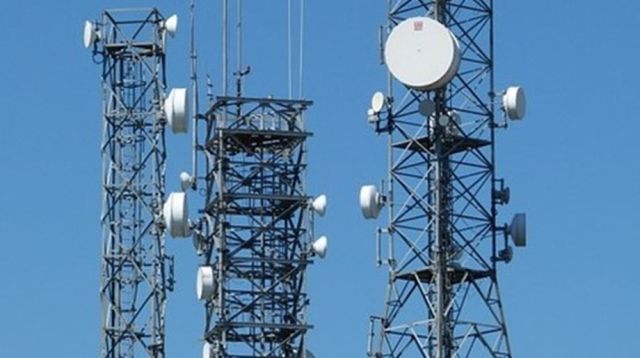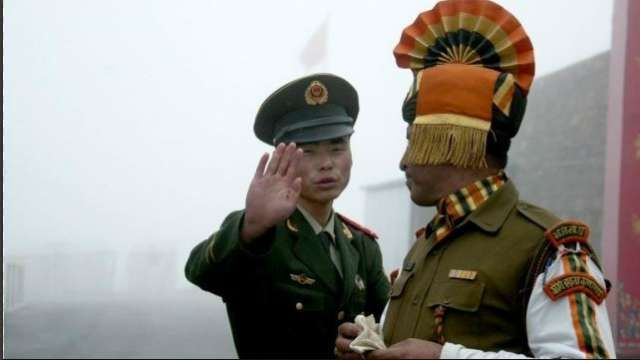
by admin | May 25, 2021 | Corporate, Corporate Governance, News
 Guwahati : Bharat Sanchar Nigam Limited (BSNL) has started a survey for installing mobile towers along the highly sensitive India-China border in Arunachal Pradesh.
Guwahati : Bharat Sanchar Nigam Limited (BSNL) has started a survey for installing mobile towers along the highly sensitive India-China border in Arunachal Pradesh.
The installation of mobile towers is expected to better the connectivity in the area.
BSNL’s Chief General Manager (CGM) for Assam Circle, Sanddep Govil, said this on Friday while addressing a press conference and added that the installation of mobile towers along the India-China border has been cleared by the Department of Telecommunications (DoT).
Govil said the government has approved a proposal for setting up 2,000 mobile towers along the border in Arunachal Pradesh.
There are no mobile towers along the India-China border in Arunachal Pradesh due to various reasons, including bad terrain. This makes it difficult for the security forces, including the Indo Tibetan Border Police (ITBP), to maintain a strict vigil along the border.
There have been instances of intrusion by the Chinese army at different locations in Arunachal Pradesh. The security forces operating along the border here have for long demanded the installation of mobile towers for better connectivity in the region.
Govil said that BSNL is investing about Rs 200 crore for rolling out 4G services in Assam, which will be made available from March this year.
“All the equipment has already arrived at the Kolkata port and is likely to reach here by the end of this month. A total of 3,500 base transceiver stations (BTS) will be added as part of the 4G expansion plan. The launch of 4G services will lead to the capability of using 23 TB of data by the customers per day,” Govil said.
He added that the public sector undertaking has been growing in Assam faster than its growth in the country. “The market share of Assam BSNL for the wireless segment is 11.07 per cent compared to the overall market share of 9.71 per cent in the country,” Govil said, adding that at present BSNL has a customer base of 25 lakh in the state in the mobile segment.
Asked about revenue generation, the CGM said that revenues from telecom have gone down.
“But there is scope of revenue generation for us, as we have recently given 35,000 closed user group (CUG) connections under the National Health Mission. We have also been asked by the government of India to connect the courts and jails and provide connections to the treasuries,” Govil said.
—IANS

by admin | May 25, 2021 | World

Foreign Minister Wang Yi
By Gaurav Sharma,
Beijing : China on Wednesday told India to prevent a repeat of the Doklam standoff in future, with its Foreign Minister Wang Yi advising New Delhi to draw lessons from the border incident.
However, Wang also said it was natural for two big nations to have differences, but they needed to set them aside and work out a solution in the long run.
Wang’s remarks come two days after Indian and Chinese troops retreated from the face-off point in the disputed Doklam plateau, ending an over two-month long standoff.
“We hope the Indian side will learn lessons from this incident and prevent similar incidents from happening again,” Wang said at a press conference on the preparations for the BRICS summit next week, which will be attended by Indian Prime Minister Narendra Modi.
“We hope through the efforts from both sides we will maintain healthy and stable momentum of growth. This is in the interest of not only Indian and Chinese people, but also meets the aspirations of the international community,” Wang said.
The standoff was triggered when the Indian Army stopped Chinese troops from building a road at Doka La in Doklam on June 16. Doklam is claimed by Bhutan and close to India’s arterial corridor, which connects its northeast region with the rest of the country.
The dispute was resolved ahead of the BRICS summit where Modi and Chinese President Xi Jinping are likely to meet on the sidelines.
“Both India and China are big countries. It’s only natural that there are some problems in our interactions. What is important is that we put these differences at an appropriate place,” Wang said.
“And under the principles of mutual respect and following the consensus of the leaders, we need to handle and manage them properly.
“In the meantime, with our engagement through a different mechanism, we need to work out a solution in the long run.
“There is huge potential and space for greater cooperation between China and India. And such cooperation serves the interests of the two countries and people’s
“We hope China and India will join hands and work together for the rejuvenation of, for development of our region and contribute our share to the greater development.”
(Gaurav Sharma can be reached at sharmagaurav71@gmail.com)
—IANS

by admin | May 25, 2021 | News, Politics
 New Delhi : India and China have agreed to “disengage” in Doklam area in Sikkim sector where the armies of both countries have been on a standoff since the middle of June, sharply escalating tensions.
New Delhi : India and China have agreed to “disengage” in Doklam area in Sikkim sector where the armies of both countries have been on a standoff since the middle of June, sharply escalating tensions.
The Ministry of External Affairs in a statement said that during bilateral communications, “we were able to express our views and convey our concerns and interests”.
“On this basis, expeditious disengagement of border personnel at face-off site at Doklam has been agreed to, and is ongoing.”
The decision to disengage their troops comes ahead of a crucial BRICS summit being hosted by China in September, which Prime Minister Narendra Modi is expected to attend.
—IANS

 Guwahati : Bharat Sanchar Nigam Limited (BSNL) has started a survey for installing mobile towers along the highly sensitive India-China border in Arunachal Pradesh.
Guwahati : Bharat Sanchar Nigam Limited (BSNL) has started a survey for installing mobile towers along the highly sensitive India-China border in Arunachal Pradesh.

